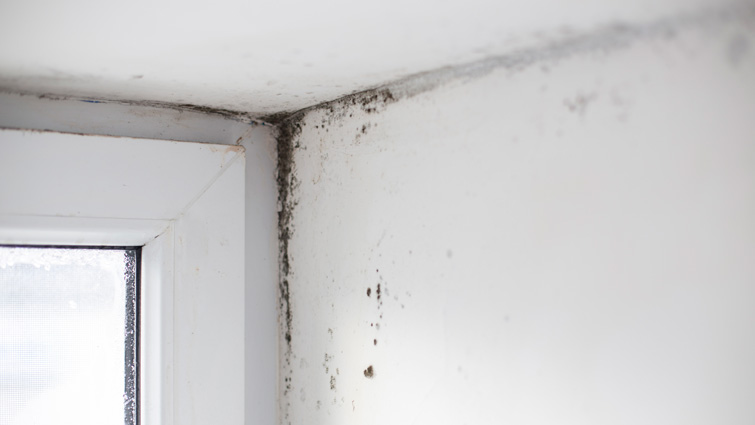Prevent dampness and condensation in your home
Published: Monday 9 October 2023

People who are regularly exposed to damp and mould within their homes are more at risk of health problems.
This can include respiratory problems, infections and other chronic conditions.
That’s why the council takes a proactive approach to damp and mould in tenant’s homes. A dampness survey is carried out in all cases reported to us, with the results determining the remedial work that is required to be undertaken.
Dampness can be caused by leaking pipes or a leaking roof resulting in patches of damp on plaster and wallpaper.
Condensation is surface dampness and is present in most homes at certain times. It usually occurs when moisture and steam are being produced, such as when bathing, cooking in the kitchen, or when washing or drying clothes inside. It is also normal to find bedroom windows misted up in the morning.
Condensation can cause the growth of black mould on walls, furnishings, curtains, and even clothes in wardrobes. It may first appear in corners or behind cupboards, but can spread across entire walls if not treated.
In many cases damp and mould can be reduced by following a few simple steps:
- Produce less moisture – cover pans when cooking and hang washing outside to dry
- Don’t let moisture or steam spread – keep doors shut when cooking or bathing
- Keep your home ventilated - open windows when cooking and ensure vents are not blocked
- Keep your home warm – heating on a low setting for a longer period is more effective than an hour in the morning and at night
Further information and advice is available at www.southlanarkshire.gov.uk. If you have concerns about damp or mould in your home, phone Housing Repairs on 0303 123 1010.
If you are finding it difficult to heat your home, help is available. To find out more, contact your local Housing Officer on 0303 123 1012.
14 July 2025
Make sure you’re on the list, for voting and more
14 July 2025
Major improvements on way for Cathkin By-Pass
11 July 2025
Tackling anti-social behaviour across South Lanarkshire
11 July 2025
Rural roads clean-up moves to Cambuslang and Rutherglen
10 July 2025
Couple first bonded over badminton
9 July 2025
Join your local licensing forum
8 July 2025
Top of the class for a happy marriage
7 July 2025
Award-winning justice initiative made permanent
4 July 2025
Free school meal pilot scheme for S1, S2 and S3 pupils
4 July 2025
Rural roads clean-up moves on to Hamilton area















